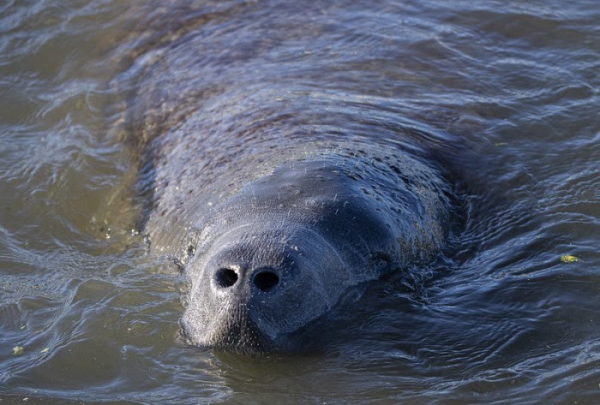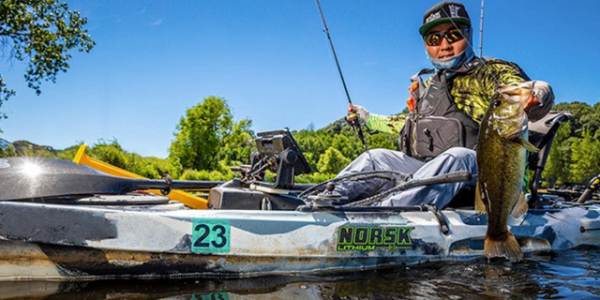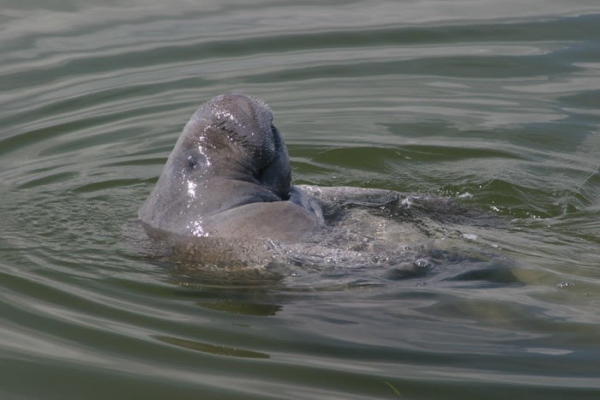Florida Governor Declares State of Emergency Due to Red Tide
Florida Governor Rick Scott has issued Executive Order 18-221 declaring a state of emergency due to impacts of red tide in Collier, Lee, Charlotte, Sarasota, Manatee, Hillsborough and Pinellas counties. Red tide is a naturally occurring algae that has been documented along Florida’s Gulf Coast since the 1840’s and occurs nearly every year.
Governor Scott said, “As Southwest Florida and the Tampa Bay area continues to feel the devastating impacts of red tide, we will continue taking an aggressive approach by using all available resources to help our local communities. Today, I am issuing an emergency declaration to provide significant funding and resources to the communities experiencing red tide so we can combat its terrible impacts. This includes making additional FWC biologists and scientists available to assist in clean-up and animal rescue efforts, more than $100,000 for Mote Marine Laboratory and $500,000 for VISIT FLORIDA to establish an emergency grant program to help local communities continue to bring in the visitors that support so many Florida families and businesses.
“In addition to the emergency order, I am also directing a further $900,000 in grants for Lee County to clean up impacts related to red tide – bringing total red tide grant funding for Lee County to more than $1.3 million. While we fight to learn more about this naturally-occurring phenomenon, we will continue to deploy all state resources and do everything possible to make sure that Gulf Coast residents are safe and area businesses can recover.”
Through the executive order, Governor Scott is providing significant state funding to local governments and research agencies, and allowing the rapid movement of resources to local communities in response to red tide impacts in Southwest Florida and the Tampa Bay area. Resources being deployed through the emergency order include:
- More than $100,000 in additional funding to Mote Marine Laboratory and Aquarium to increase its response to red tide impacts. This funding will help Mote Marine deploy additional scientists to assist local efforts to save animals affected by the naturally occurring red tide, including manatees, dolphins and sea turtles.
- Since 2011, Florida has invested more than $17.3 million through the Fish and Wildlife Research Institute (FWRI) in red tide research, including more than $5.5 million for a partnership with Mote Marine to study the causes of red tide.
- Making additional biologists and scientist available to support local government’s response to red tide and protect wildlife – this is in addition to the staff deployed by FWC at Governor Scott’s direction last week.
- Continuation of enhanced water monitoring and testing by the Department of Environmental Protection and FWC to give scientists the best possible data to work with.
- Direction for VISIT FLORIDA to begin developing a marketing campaign to assist Southwest Florida communities that will start following this year’s red tide blooms.
- VISIT FLORIDA will also create a $500,000 emergency grant program to assist local tourism development boards in counties affected by the naturally-occurring red tide.
- Additional aid from the Department of Economic Opportunity with business assistance, including interest free loans and an enhanced presence in Southwest Florida.
THE STATE OF FLORIDA HAS TAKEN THE FOLLOWING ACTIONS ON RED TIDE:
FISH AND WILDLIFE
- DEP and FWC have provided $100,000 in additional funding to Mote Marine to support efforts to rescue distressed marine animals, such as dolphins, sea turtles and manatees.
- Continuation of enhanced water monitoring and testing by the Department of Environmental Projection and FWC to give scientists the best possible data to work with.
- At Governor Scott’s direction, FWC has mobilized all available resources to mitigate naturally occurring red tide, and Executive Director Eric Sutton has waived rules through an executive order to expedite the removal of dead fish – regardless of applicable bag, size, or possession limits or of season or area closures – from shoreline, inshore or nearshore areas in the following counties: Collier, Lee, Charlotte, Sarasota, Manatee, Hillsborough and Pinellas.
- FWC law enforcement officers have been actively helping with animal rescue and red tide reconnaissance work.
- Additional biologists and scientist are available to support local government’s response to red tide and protect wildlife.
- FWC is operating the toll-free fish kill hotline. To report fish kills, contact the FWC Fish Kill Hotline at 800-636-0511 or submit a report online. Reports from this hotline help FWC researchers track and better understand the impact of red tide in Florida.
- FWC remains available to local agencies and partners in affected areas, including area business and tourism groups in Southwest Florida. Any local agency or group that has any questions or concerns can contact Kelly Richmond from the FWC at 727-502-4784.
- FWC continues to partner with the Florida Department of Health to advise residents and visitors of any potential health impacts. Residents and visitors can contact the DOH’s aquatic toxin experts at 850-245-4250 or contact their local health department for any concern about health safety.
- FWC’s Fish and Wildlife Research Institute and Mote Marine Laboratory work together to monitor Karenia brevis. This cooperative effort is designed to help mitigate the adverse impacts of red tide. This joint research program that includes red tide monitoring, research and public outreach and education has resulted in better tools and ongoing monitoring for red tides along the Gulf Coast.
- In partnership with FWC, the Collaboration for Prediction of Red Tides (CPR) at the University of South Florida offers a new Harmful Algal Bloom tracking tool that generates a 3.5-day forecast of the bloom trajectories.
- To protect public health, FWC’s Fish and Wildlife Research Institute’s Harmful Algal Bloom group closely monitors the status of K. brevis on Florida’s coasts, providing technical support to the Florida Department of Agriculture and Consumer Services (FDACS), the agency that regulates approved shellfish harvesting areas.
- Since 2000, FWC’s Fish and Wildlife Research Institute established a Red Tide Offshore Monitoring Program, which is a volunteer program for citizens to help collect water samples from routine collection points and sites reported for suspected harmful algal blooms. The timely sampling by volunteers allows researchers to provide an early warning of offshore algal blooms and investigate reported events as they occur. The Program needs volunteers to collect samples from all coastal Florida counties. To view more information visit, Red Tide Offshore Monitoring Program or use the Volunteer SignUp Form.
ENVIRONMENTAL PROTECTION
- Under the direction of the emergency order issued by Governor Scott last month, DEP provided $1.3 million in grant funding to Lee County to clean up waterways affected by red tide. Lee County will use this additional funding to enhance the county’s efforts to clean local waterways from impacts caused by red tide.
- DEP continues to perform enhanced water testing, beach cleanup and public outreach, as well as the deployment of additional biologists to assist communities dealing with naturally occurring red tide.
HEALTH AND SAFETY
- Florida’s County Health Departments have taken the following actions:
- Lee County has posted red tide signs at more than 170 beach access points along the Lee County coastline. The red tide signs provide details on respiratory issues, health precautions, and resources for FWC, Mote Marine and current beach conditions. Environmental staff and County Health Department (CHD) leadership are in contact with city and county leadership, as well as local partners, in order to coordinate efforts and messaging. A press release detailing the effects of red tide and resources for mediation was sent out to local media partners. Additional resources, like website materials, social media posts, etc., have been shared with local partners for their use and distribution to their partners.
- Sarasota County environmental staff and CHD leadership have been in contact with city and county government and Visit Sarasota in order to coordinate messaging and provide template signage, website links, and creative materials. The CHD has also worked with the county in order to post signs at every beach, provided rack cards to the county and Mote for distribution.
- Charlotte County has posted signage along the beaches to advise visitors and tourists about the water conditions. The CHD has performed outreach to their community partners, as well as local government, to share informational resources, creative materials and public health messaging. They also are coordinating efforts and assisting their sister agencies, as needed.
BUSINESS AND INDUSTRY
- Governor Scott has directed VISIT FLORIDA to begin developing a marketing campaign to assist Southwest Florida communities that will start following this year’s red tide blooms.
- VISIT FLORIDA will create a $500,000 emergency grant program to assist local tourism development boards in counties affected by the naturally-occurring red tide.
- The Department of Economic Opportunity is providing interest free loans and has deployed an enhanced presence in Southwest Florida.






